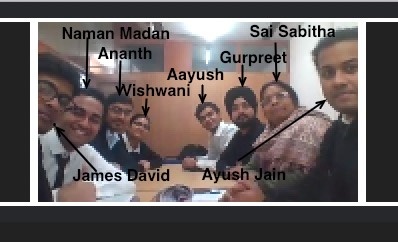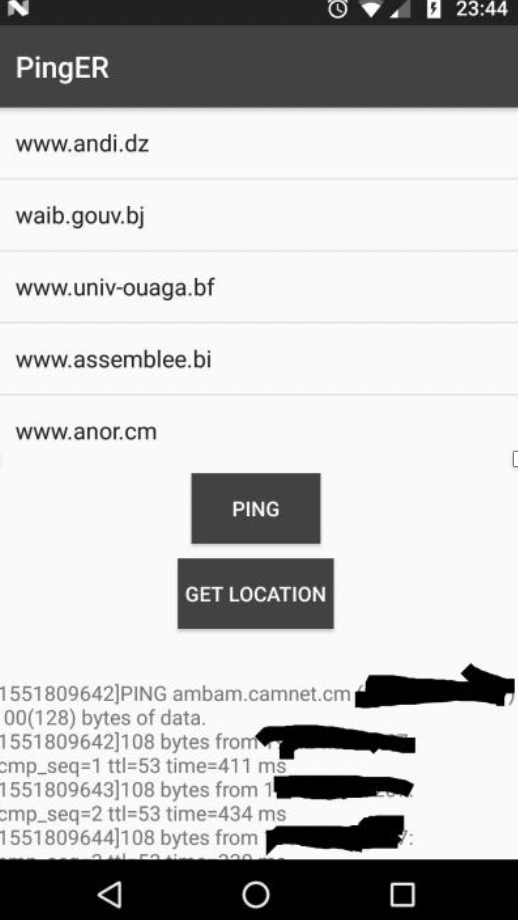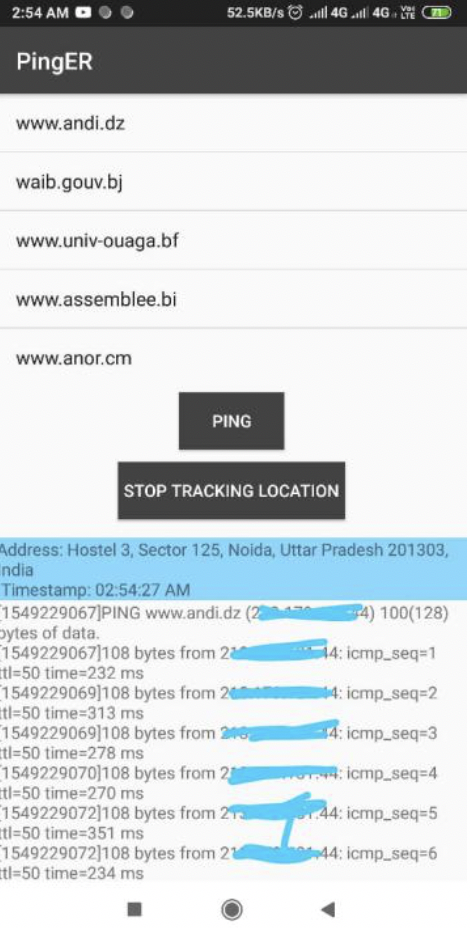...
Amity (Updated 3/3/2019).
Amity team photo:
Email list (pinger-am in https://groups.google.com) set up for the Amity PingER team including Aayush Jain, James David, Naman Madan, Dr Sai Sabitha. Invites sent 1/26/2019, only Naman accepted.
Dr. Sai Sabitha Topher sent the final copy of paper Id 255: "Network Performance of PingER data with respect to growth of the Telecom Industry in India" that was presented at Amity Confluence conference 1/10/2019.
Requested final copy of the paper ID 256: "Extension of the PingER project onto Mobile Devices using Android Applications" for the SLAC archives, by email 1/26/2019.
From the meeting with Amity last month:
The following are the data analysis projects:
- Title (tentative): Correlation Analysis between network performance and GDP of a country using PingER data. Abstract (tentative):
This paper aims towards finding the correlation between Gross domestic product (GDP) of a country and it’s network performance (ping analysis)
using PingER data. Email ID: Naman Madan, naman.madan25@gmail.com - Title (tentative): Comparison of network performance of India and Pakistan using PingER data. Abstract (tentative):
This paper aims at comparing the network performance of India and Pakistan using the PingER network performance data of 2-3 years of both the countries, and applying clustering to the year-wise data. Comparing the number of components in each cluster will help in concluding the quality of the network performance. More the number of the components, with the least average RTT, better the performance. Email ID: Vishwani Sati, vishwani.sati@gmail.com - Title (tentative): Data packets loss prediction due to environmental factors.
Abstract (tentative): Pinger data losses during certain environmental factors like – Earthquakes, heavy rainfalls, Tsunamies etc, are major concern for the big companies, delay of few seconds will lead to huge customer breakdown. To deal with this situation, we will analyze the data losses trend with respect to the external environmental factors and will predict the data losses beforehand so that company will have upper hand if some crises stricks in future. We will analyze the Pinger data and environmental conditions attributes and will make algorithm that will predict the losses in pinger data. Email: Gurpreet Singh, gurpreetn92@gmail.com.
Android progress:We (Topher and the PingER team) agreed to request Amity to share the App and instructions with us; we will look at installing on a jailbroken Android phone at the San Francisco end and try it out.
- Instructions from Aayush to load the application are at ePingER Functional prototype (for Androids only)
- Topher was able to make the prototype work on an android phone prior to our last call. They might have an updated app, in which case he can further test it, but he’d need to know where to get it. He offered to put it in an android phone and drop it off for you at SLAC where we can also test it, in early February.
- Email sent to Amity 1/27/2019 asking if there is a newer version of the App.
Email sent to Amity 1/26/2019 and again 3/3/2019: "We also need to finish up the proxy acquisition of data from the Android MAs. According to the notes from the recent meeting
- We We will use the amity anonymous FTP server to gather the data.
- They will add the GPS coordinates (lat/long) to the MA data. This will enable looking at mobile PingER measurements.Is this correct? What will be the address to fetch the data from by anonymous FTP? If so there any progress? Do you need anything from our end?"
- We have requested to know how the extra information on lat/long will be added to the records (I.e. the format of the android records) since accommodating that will require changes in the gathering/storage/analysis to be backwards compatible. Thus it needs to be algorithmically simple to identify and extract the extra information. For example providing a simple separator between the old data format and the new extra lat/long data, such as a semi-colon.
Work Flow for the PingER App
1. The user opens the application. The layout consists of a ListView displaying the hardcoded IP addresses from the SLAC website along with two buttons- one to ping the beacons and the other to get the location of the user.
2. On Clicking the “Ping” Button each of the hardcoded IP addresses are pinged and the output is displayed on the screen.
3. On Clicking the “Get Location” button the current location of the user is displayed. Google Geolocation API is used to implement this feature.
Flowchart of the Application
Bebo will contact Topher, and look at installing on a spare Android at Bebo's home in San Francisco. We could also do that at SLAC. Topher will get us some Android phones when he gets back in early March.
...



